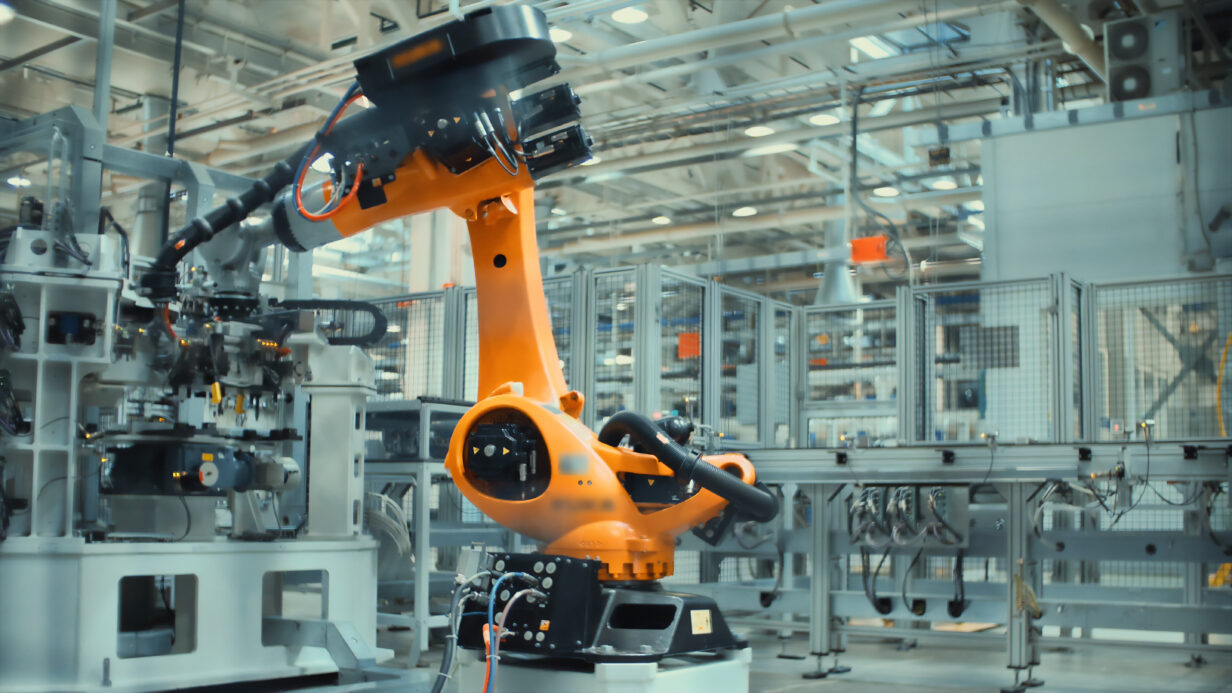
White Papers
The global market for mobile robotics is expanding rapidly. From collaborative robots (cobots) working safely alongside humans, to humanoid robots and new consumer applications, robots are becoming more capable, more affordable, and more widespread. Behind this growth lies a critical enabler: sensing.

Traditional industrial robots relied mainly on motor current and position feedback. That worked well enough for repetitive, isolated tasks. But in today’s world, where cobots share space with people, humanoids walk on two legs, and robots handle delicate tasks, force and torque sensing has become essential.
Embedding force and torque sensors into robot joints improves control, accuracy, and above all safety. In fact, ISO 10218-1, the international safety standard for industrial robots, typically requires force–torque sensing in cobots and humanoids. Some leading manufacturers now embed torque sensing in every joint. Tesla’s Optimus humanoid robot reportedly carries 14 torque sensors and 18 force sensors, underscoring just how central this technology has become.
There are currently two key technologies for torque measurement in robotics applications:
This is the conventional method for measuring rotating torque by using a strain gauge attached to a flex plate in the joint of the robot. Changes in strain, because of torque, are recorded as variations in an electrical signal.
Advantages of strain gauges are they are relatively low cost and simple to apply in low volume like a test lab. However, the disadvantages of strain gauges in robotic joints include:
This method typically uses a pair of measurement disks attached at opposite ends of a shaft. The ‘twist angle’ of the shaft is measured from the phase difference between them through an optical or magnetic measurement. This enables torque to be calculated.
The main advantage is the ability to overload the sensor to the maximum load capacity of the “twist shaft”. The disadvantages of this method include:
Both approaches rely on flex or twist within the robot’s joints. This compromises stiffness, performance, and repeatability, all factors that become critical in cobots, humanoids, and advanced medical or warehouse robotics.

The team at Transense has pioneered and patented an alternative technology that provides an improved way to measure torque, rotation and temperature in a robotic system. It virtually eliminates joint flex, creating a higher performing, more repeatable robot with more compact joints than has been possible before.
Transense SAW technology is, a wireless, passive, non-contact sensing system consisting of two main components:
The SAW AQP’s can be mounted onto a shaft or other moving component and, if a rotation of less than 360 degrees is required, it can be hard wired, or if a rotation of more than 360 degrees is required, it can be communicated with across a simple RF coupler, which is essentially a near field antenna system used to transmit the RF signals to and from the sensing elements. The SAW sensing elements are entirely passive and do not require any other power source, working as a passive device reflecting the interrogation signal back to the reader electronics.
The frequency of oscillation of the reflected signal is influenced by physical measurements such as strain or temperature. The interrogation electronics analyses the difference in transmitted and received signal, calculating the value of the physical strain or temperature. Measuring the principal strains caused by torsion on the shaft gives a highly accurate measurement of shaft torque, or the sensing elements can be configured to measure linear forces.
The key advantages of Transense Technologies' SAW sensors are:
This combination delivers cleaner, more accurate data for control systems, enabling faster, safer, and more precise robot movements.
Because SAW sensors can detect extremely small strain levels, they also open new doors for tactile surface sensing. Imagine a humanoid robot not just gripping an object, but sensing pressure across its surface—feeling, adjusting, and reacting like a human hand. That level of sensitivity is now within reach.
The robotics industry is moving quickly from isolated, repetitive machines to intelligent, adaptive systems. Force and torque sensing is at the heart of this transition, underpinning safety, compliance, and performance.
Transense’s SAW technology offers a breakthrough: robust, compact, and highly accurate sensors that remove the compromises of traditional approaches. For cobots, humanoids, and the next generation of robotics, it could be the step change that enables safer, smarter, and more capable machines.
Ryan Maughan, Managing Director, Transense Technologies Plc
Contact our team to discuss how SAW Sensors could enhance your project